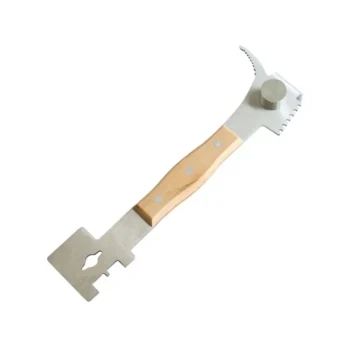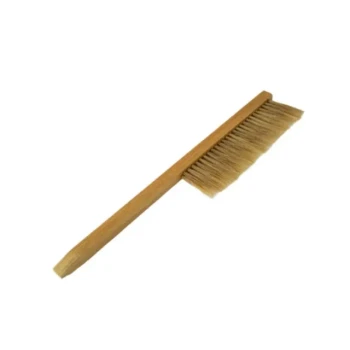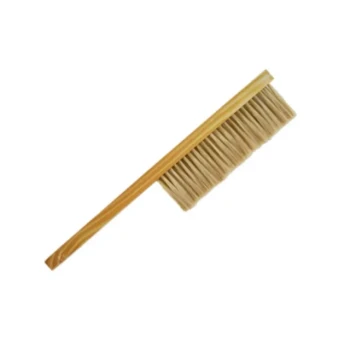For a honeybee colony, insulation is a critical tool for surviving cold weather. By acting as a thermal barrier, insulated hives help bees retain the heat they generate, which significantly reduces their honey consumption and prevents the dangerous buildup of internal moisture. This creates a stable, dry environment that conserves the colony's energy for a stronger start in the spring.
The primary benefit of an insulated hive is not just warmth, but energy conservation. By minimizing heat loss, insulation allows the colony to preserve its vital honey stores, ensuring it has the fuel needed for both winter survival and rapid spring expansion.
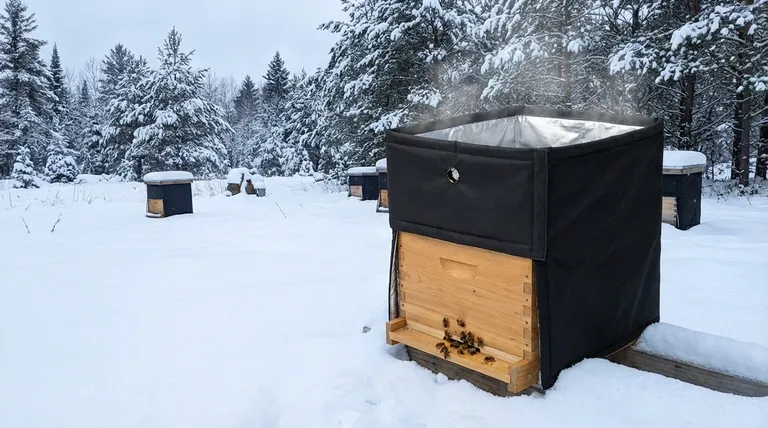
The Core Problem: Winter Stress on a Colony
To understand the solution, you must first understand the dual threats a honeybee colony faces during winter: heat loss and moisture.
The Energetic Cost of Keeping Warm
Honeybees do not hibernate. Instead, they form a tight cluster and generate heat by vibrating their wing muscles, effectively turning the cluster into a living furnace.
This process is fueled by honey. The colder the ambient temperature inside the hive, the more energy the bees must burn—and the more honey they must consume—just to stay alive.
The Lethal Danger of Moisture
A byproduct of bee respiration is warm, moist air. In a cold, uninsulated hive, this humid air rises and hits the frigid inner cover or walls, where it condenses into water.
This condensation creates cold droplets that can drip down onto the cluster, chilling and killing the bees below. A wet bee is a dead bee in winter. This moisture also promotes the growth of mold and mildew on combs and equipment.
How Insulation Solves for Winter Stress
Insulation directly counteracts the primary threats of heat loss and condensation, creating a more stable and survivable microclimate.
Reducing Heat Loss
Insulation acts like a thermal buffer, dramatically slowing the rate at which the heat generated by the cluster escapes the hive. It functions like a well-designed winter jacket.
This means the bees' "furnace" doesn't have to work nearly as hard to maintain the cluster's core temperature.
Conserving Critical Food Stores
By reducing the energy needed for heat production, insulation directly reduces the colony's winter honey consumption.
This conservation is crucial. The honey saved is used in late winter and early spring to feed the queen and brood, fueling a rapid population expansion as the weather warms. A colony exiting winter with ample food stores is poised for a more productive season.
Preventing Condensation
Perhaps the most underrated benefit of insulation is moisture management. By keeping the hive's inner surfaces warmer, insulation can raise their temperature above the dew point.
When the interior walls and ceiling are no longer frigid, the warm, moist air from the cluster is less likely to condense. This keeps the hive interior dry, protecting the bees from cold drips and preventing harmful mold growth.
Understanding the Trade-offs and Considerations
While highly beneficial, insulation is not a magic bullet. Its effectiveness depends on a holistic approach to winter hive management.
Insulation and Ventilation Work Together
Insulation is not a substitute for ventilation. While insulation prevents condensation by keeping surfaces warm, you still need a way for excess water vapor to exit the hive.
A small upper entrance or a ventilated quilt box allows this moist air to escape without creating a cold draft. The goal is a warm, dry hive, not a sealed, airtight container.
Material Is a Factor
While standard wooden beehives provide a degree of natural insulation, it is often insufficient for harsh winters.
Adding supplemental insulation, typically in the form of rigid foam panels placed around the hive bodies and on top, provides a significant boost in thermal performance.
Applying This to Your Colony's Success
Your approach to insulation should align with your specific goals for your apiary.
- If your primary focus is winter survival: The combination of insulation and proper ventilation is the most effective strategy to prevent colony loss from starvation and moisture.
- If your primary focus is a strong spring start: Conserving honey stores through insulation directly translates to more resources for raising new bees, leading to a larger, more productive workforce earlier in the season.
- If your primary focus is hive health: A dry, mold-free environment created by insulation reduces overall stress on the colony and minimizes the risk of moisture-related diseases.
Ultimately, insulating a beehive is a strategic investment in the colony's energy reserves, setting them up for not just survival, but success.
Summary Table:
| Benefit | Impact on Your Colony |
|---|---|
| Reduces Heat Loss | Bees use less energy to stay warm, conserving vital honey stores. |
| Prevents Condensation | Keeps the hive dry, eliminating cold drips and mold growth. |
| Conserves Food Stores | More honey is available for a rapid and strong spring population build-up. |
Equip your apiary for winter success with HONESTBEE.
As a trusted wholesale supplier to commercial apiaries and equipment distributors, we provide the durable, high-performance insulation solutions your colonies need to conserve energy and thrive. A well-insulated hive is an investment in your season's productivity.
Contact our team today to discuss wholesale pricing and the right equipment for your operation.
Visual Guide
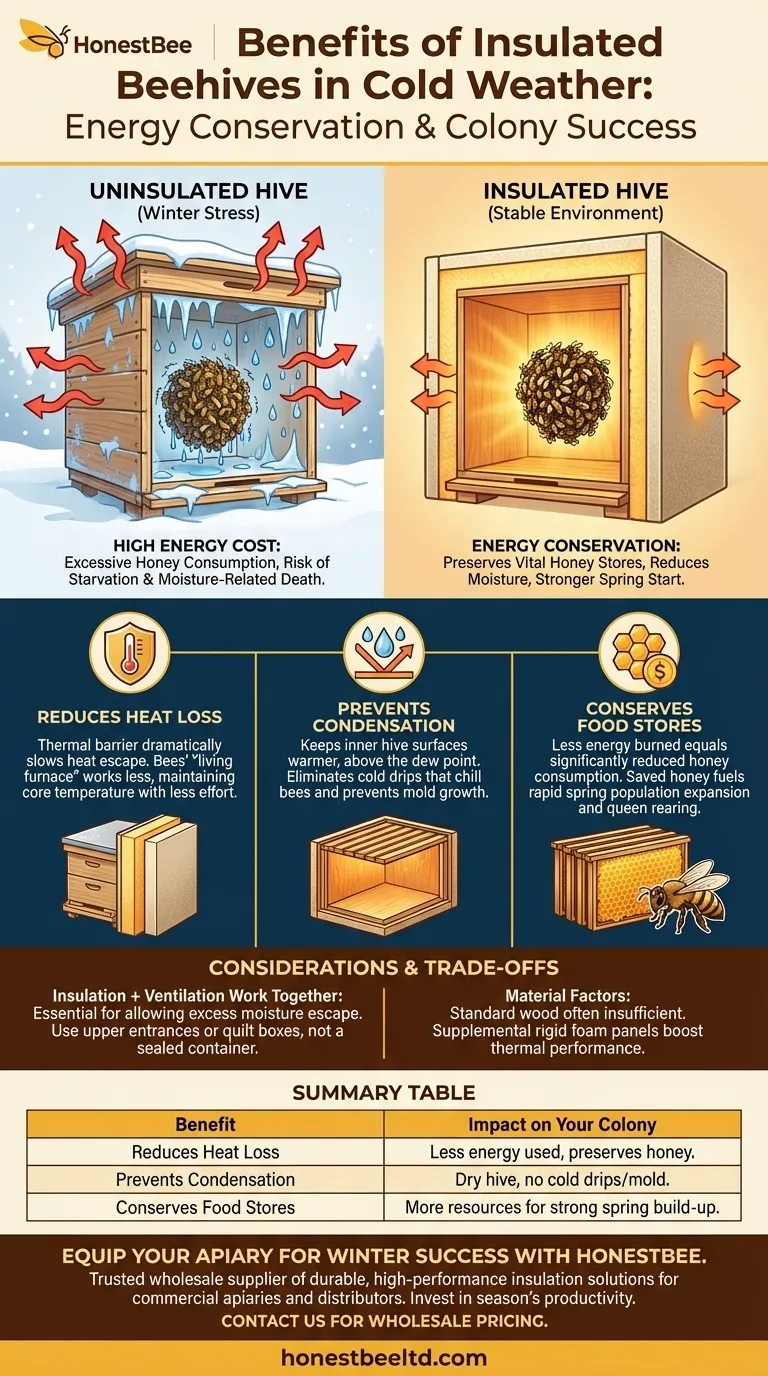
Related Products
- Professional Insulated Winter Hive Wrap for Beekeeping
- Inner Beehive Cover for Beekeeping Bee Hive Inner Cover
- HONESTBEE Professional Long Handled Hive Tool with Precision Cutting Blade
- Professional Galvanized Hive Strap with Secure Locking Buckle for Beekeeping
- Multi-Function Hive Tool with Integrated Hammer for Beekeeping
People Also Ask
- Is it always necessary to insulate beehives? A Guide to Winter Survival & Colony Health
- Why is insulation important for hives during winter? Ensure Your Bees Survive and Thrive
- What factors ensure bees stay warm and healthy during winter? Master the 3 Keys to Hive Survival
- How does insulation help bee hives in severely cold weather? Conserve Energy & Ensure Colony Survival
- Why is it important to insulate beehives during winter? Boost Your Colony's Survival Rate




